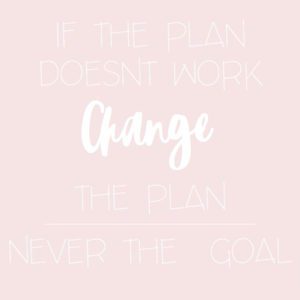Tired eyes, interrupted sleep, neck pain, inability to focus. All of these symptoms could be a result of screen time fatigue. With an increase in people working from home, virtual schooling and digital communication, our patterns of consumption have changed impacting our health and our mental state. It can be important to learn how to set healthy boundaries in order to manage the digital fatigue and gain more energy.

Are You Experiencing Screen Time Fatigue?
Excess screen time is leading to a host of physical issues such as neck/eye strain as well as mental exhaustion from staring at a screen all day, the lack of human interaction and very few breaks. For me, I know it's been taking a toll, resulting in increased anxiety, more headaches, eye strain and restless sleep. If you are experiencing similar physical or emotional symptoms, you are not alone.
Healthy Boundaries to Combat Digital Fatigue
Now that we have identified the impact of increased screen time on our health, it's time to explore what we can do to set health boundaries. Also, to curb our consumption and regain some of that energy we have lost. Start small, pick one of the 5 tips below, and work it into your routines daily. Do this for one week to help manage your digital fatigue. Once the shift becomes part of your routine and doesn't take as much intentional focus, add in another small shift.
Take time every few weeks to reflect on the small changes you have made. Then, see how the changes impact your sleep, your energy and your mental health.

5 Tips to Manage Digital Fatigue
1. Set screen-time limits
Apple has build in systems to add screen time limits by app or category. I use the limitation for Instagram to be more aware of my usage throughout the day. Also, this helps me limit my after-hours screen time. I am able to put that time towards more energizing tasks like exercise and outdoor time with my son.
2. Build in movement breaks
Movement breaks help release endorphins. Also, it triggers more joy and helps with your physical health as well. So, I started working out in the morning before my workday starts and going for a short walk at lunch or taking one call a day while walking. These simple shifts can help counteract all the time spent in front of your screens. Also, it ensure you are getting the movement needed for your mental health and physical well-being.
3. Turn off notifications during virtual meetings & close screens
In addition to being on our screens all day, multi-tasking can add to digital fatigue. So, to cut down on the distractions and reduce the consumption overload, make a point to close all notifications and secondary screens during meetings, workshops, and calls. Focusing on one thing will give your brain more of a rest and allow you to move into the next task feeling more fulfilled and recharged.
Screentime Limits that Foster Connection
4. Use voice to text
In addition to video calls, virtual school and non-stop zoom events, we are constantly responding to notifications, text messages and digital inquiries. So, while we use these methods to connect with friends and loved ones the meals of communication can leave us exhausted and missing the human interaction. Try using voice memos to communicate. Also, sometimes hearing a loved ones voice without having to be on screen can feel more personal, let you respond on your timeframe and allow you to disconnect more.
How to Reclaim Your Me-Time
5. Plan for transitions/me-time
In the world of back to back virtual meetings, homeschooling and zoom happy hours we forget to take time to decompress. For many of us, this used to be the car-ride home, sitting on the train or even grabbing a coffee in the morning. So, how do we find that time now when we may never leave the house. Try blocking time on your calendar. Also, really taking lunch and taking formal breaks to pop on a song. Moreover, you can listen to a podcast or talk a walk outside. It may not happen spontaneously, but the need to take breaks is essential to combat digital fatigue.
Are You Ready to Manage Your Digital Fatigue?
Managing your digital fatigue takes intentional focus and a shift in the way you go about your daily routines. So, with time the changes will become second nature. Then, little by little you should start to see improvements in your stress and physical strain from from the screen time. Nonetheless, from time to time you may still sleep into poor habits of digital consumptions. Save this post and come back for a reminder when you feel yourself falling off track.
What is helping you cope with digital fatigue and an increase in screen time? Let me know in the comments!


Breast cancer survivor, lover of style, beauty and all things pink! Inspiring you to thrive through adversity.
READ MORE








1 Comment